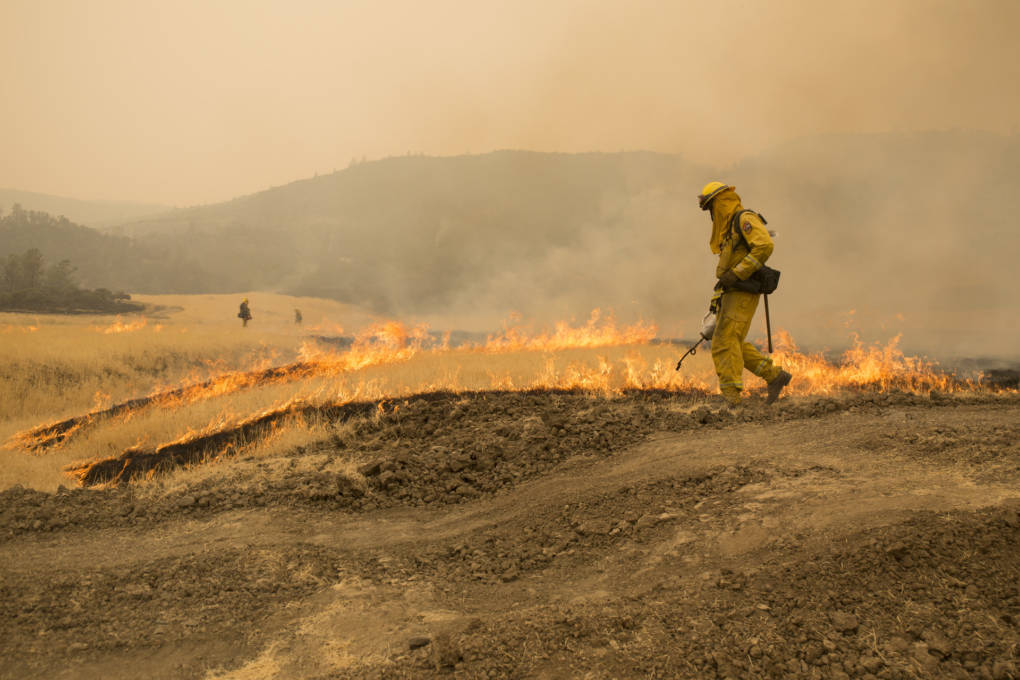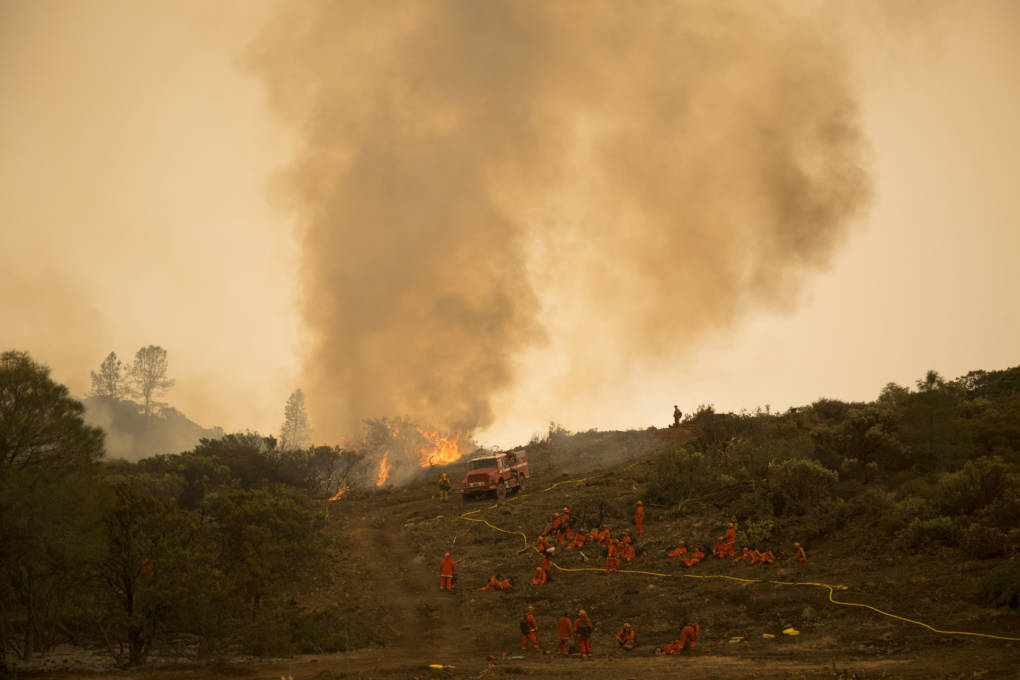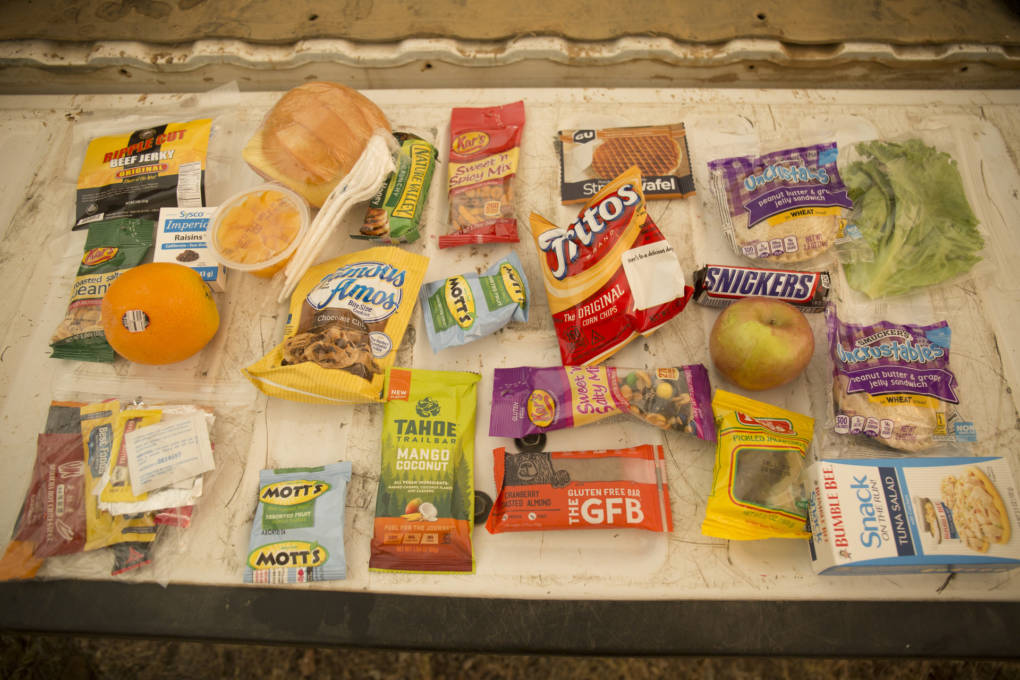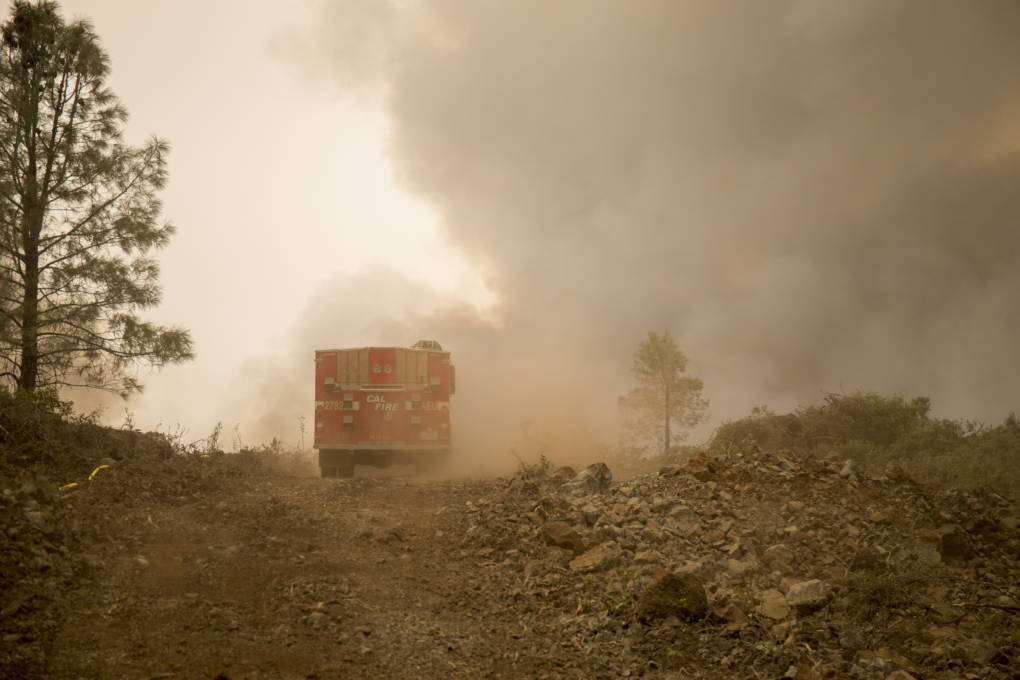KQED's Sukey Lewis and Anne Wernikoff embedded with a Cal Fire strike team for 12 hours. Here's a snapshot of their day.
6:40 a.m. The firefighters of Cal Fire strike team 9272C eat their breakfast at the massive base camp set up in Ukiah before they set out on a 24 hour shift. The team will be working in the field until 5 a.m. the following day.
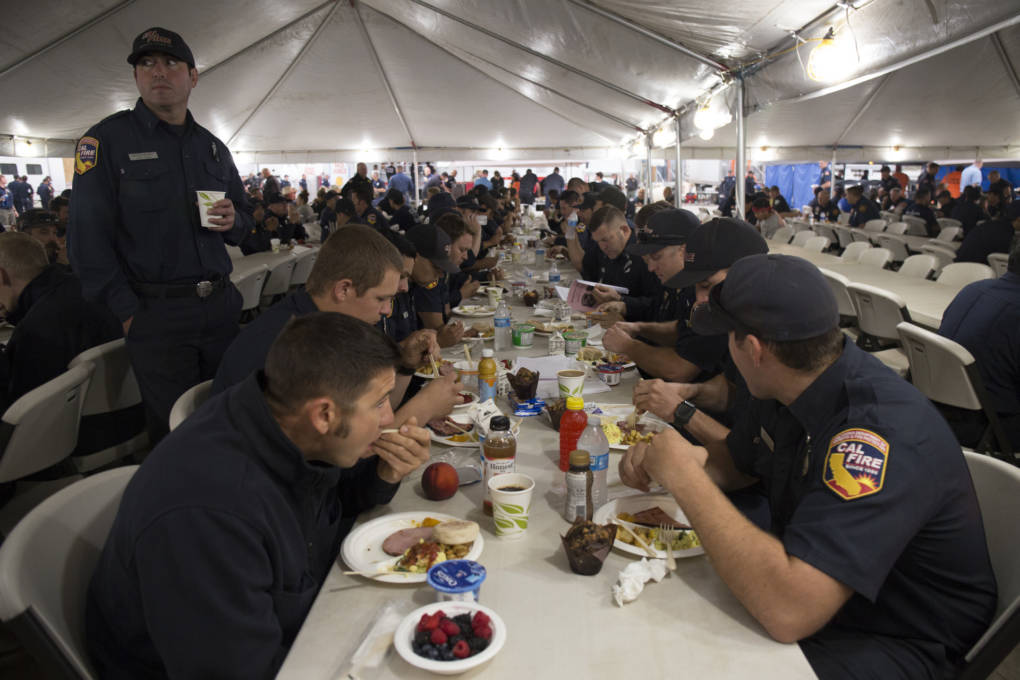
"Some of these guys have been going since June 22 with a couple of days off," Captain Stevie Long said. "That's a long time to be away from your loved ones."
7:30 a.m. The strike team, which is made up of about 20 firefighters and five fire engines, listens to their mission briefing for the day before driving out from base camp. They will focus on expanding containment on the southeastern edge of the massive Ranch fire burning from Lake into Colusa County.
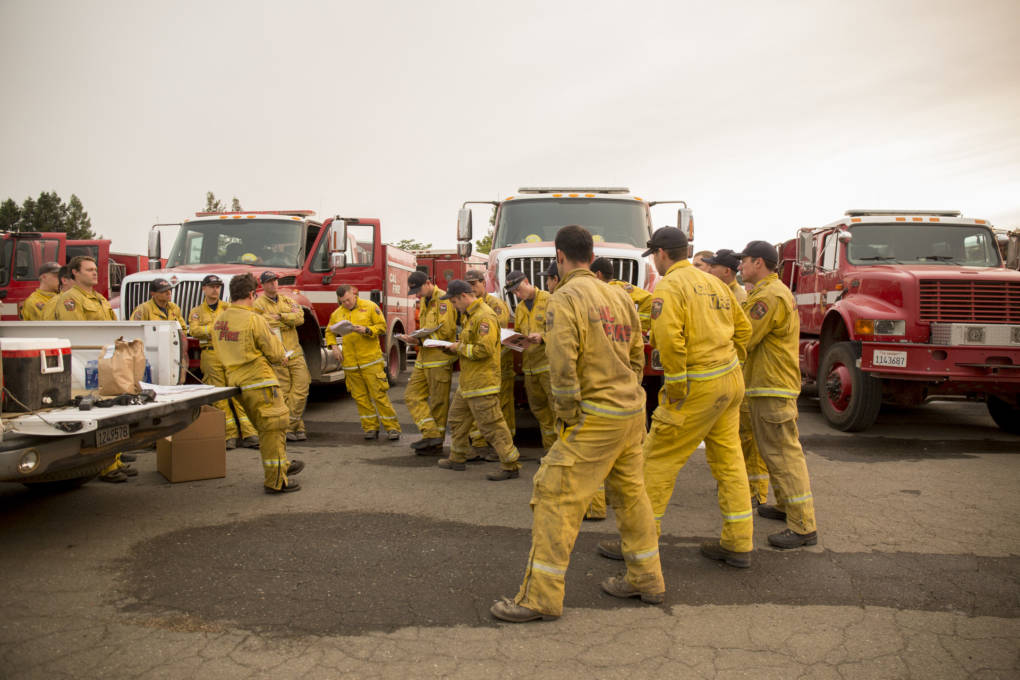
10:19 a.m. Strike team 9272C turns down a dirt road just past the Colusa County line. They pass ranches and farmhouses huddled beneath the smoke.
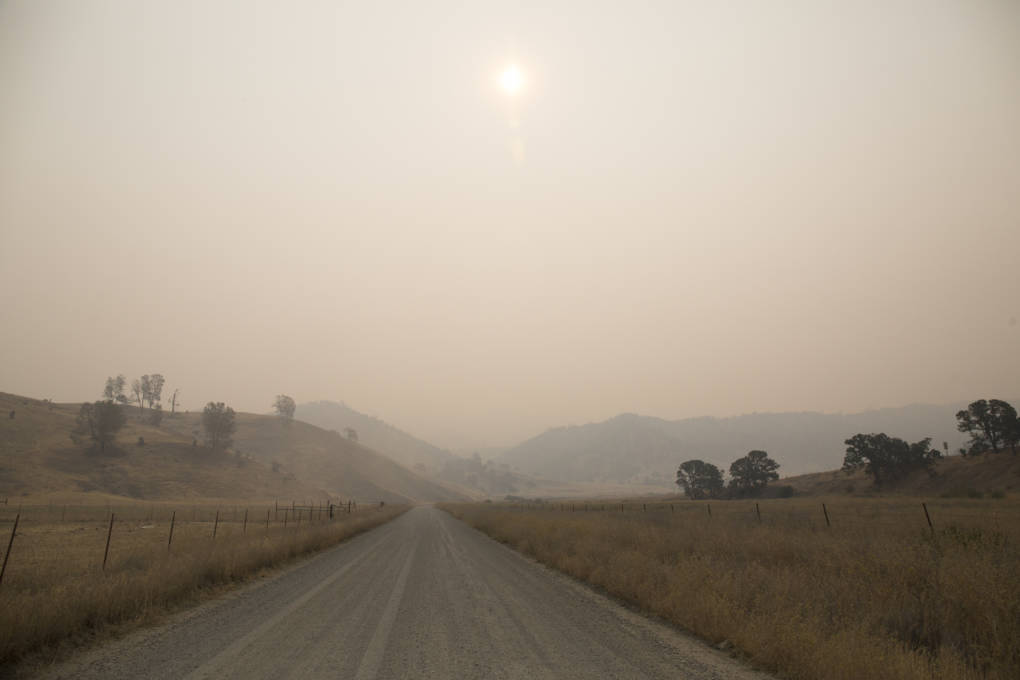
11:30 a.m. Cal Fire Captain Stevie Long explains the morning's plan to her strike team. She wants the crews to light a couple of small controlled burns in the area in preparation for a large firing mission planned for the evening.
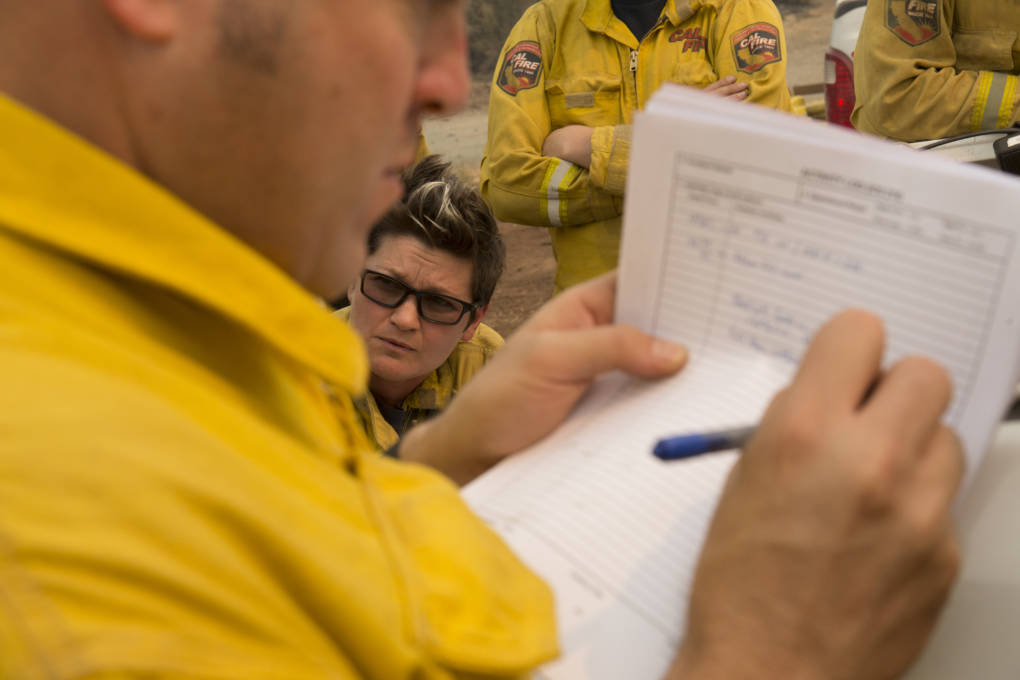
12:30 a.m. Firefighter Ely Ransdell from El Dorado County walks through bushes that are part of an island of unburned brush that could threaten the containment line if they suddenly go up in flames. Ransdell is assessing how and if these bushes will burn.
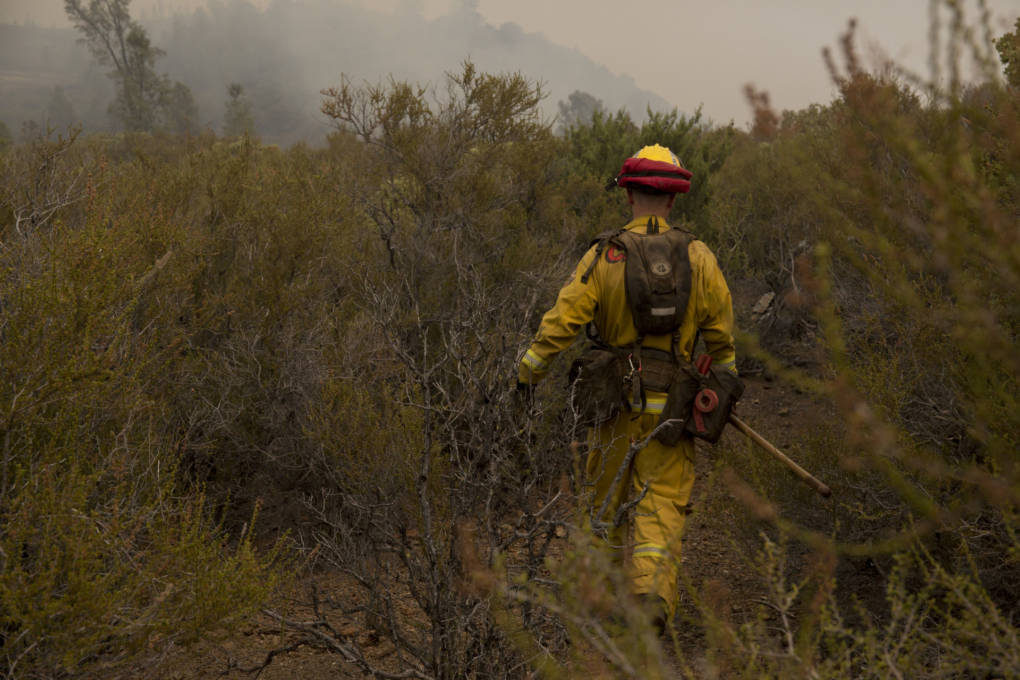
"The winds are extremely squirrelly here and there, I mean, we have a northwest and then we have a west," Long said. "It's going to switch to a southwest. And then on top of that we're down below a lake."
